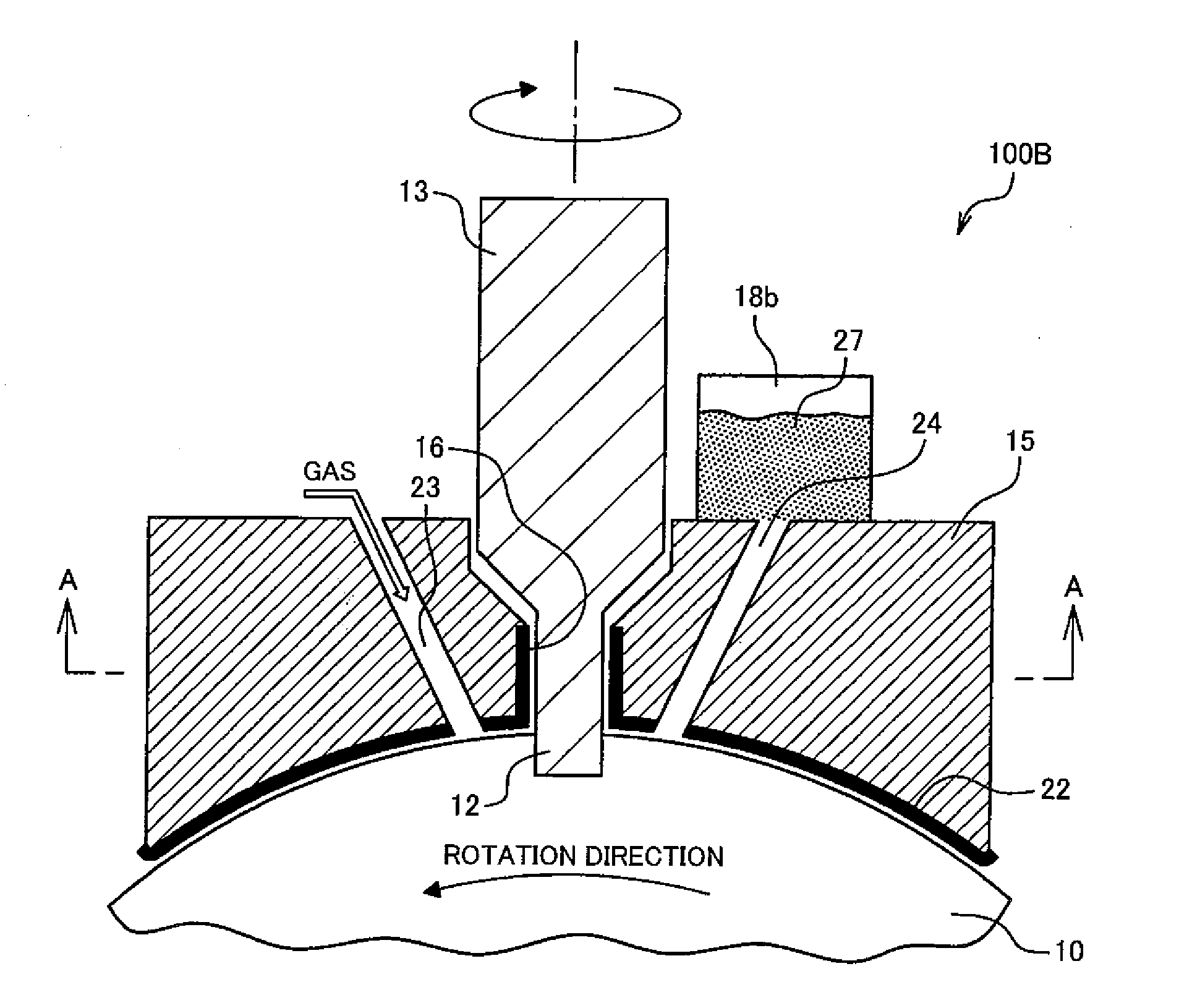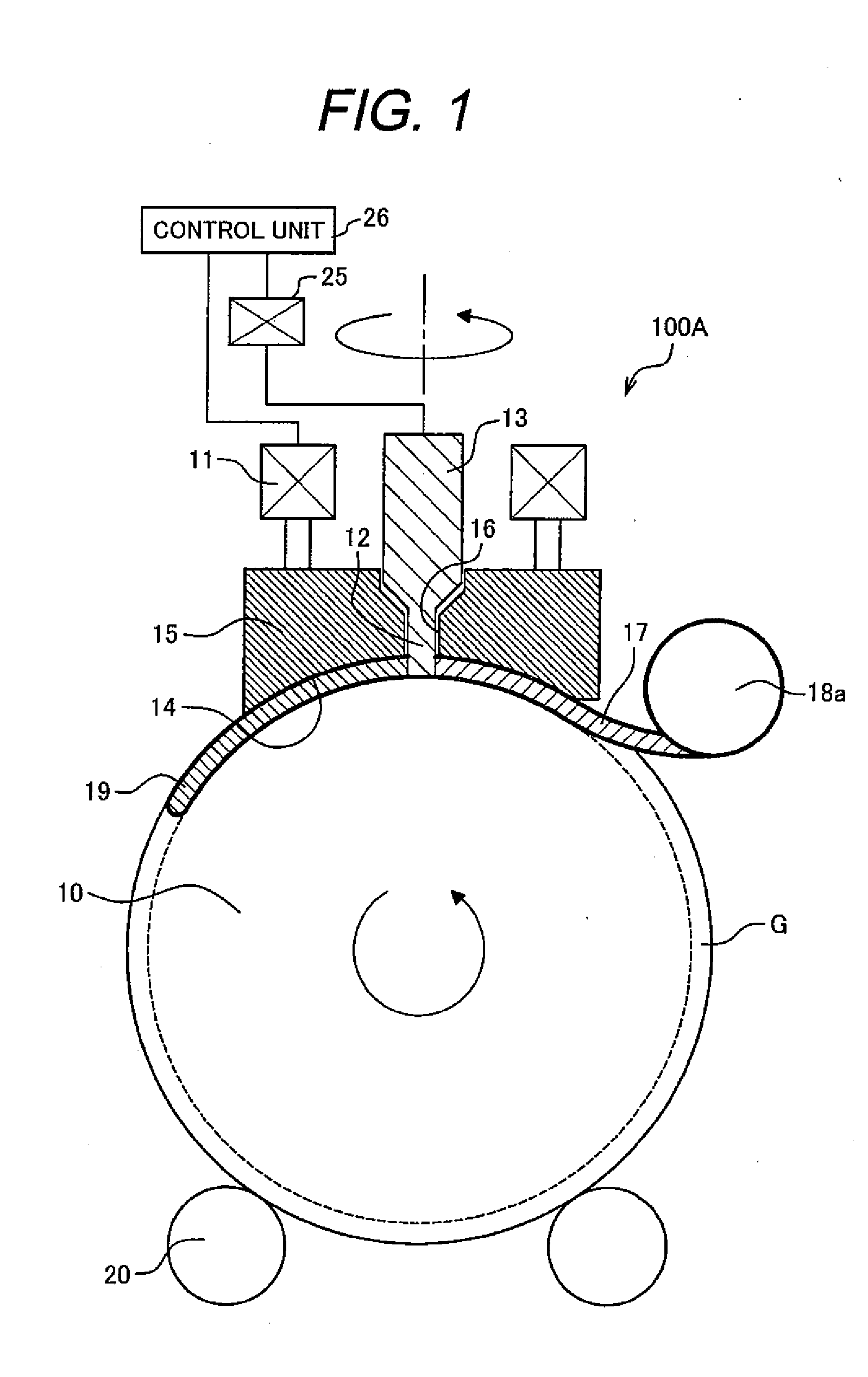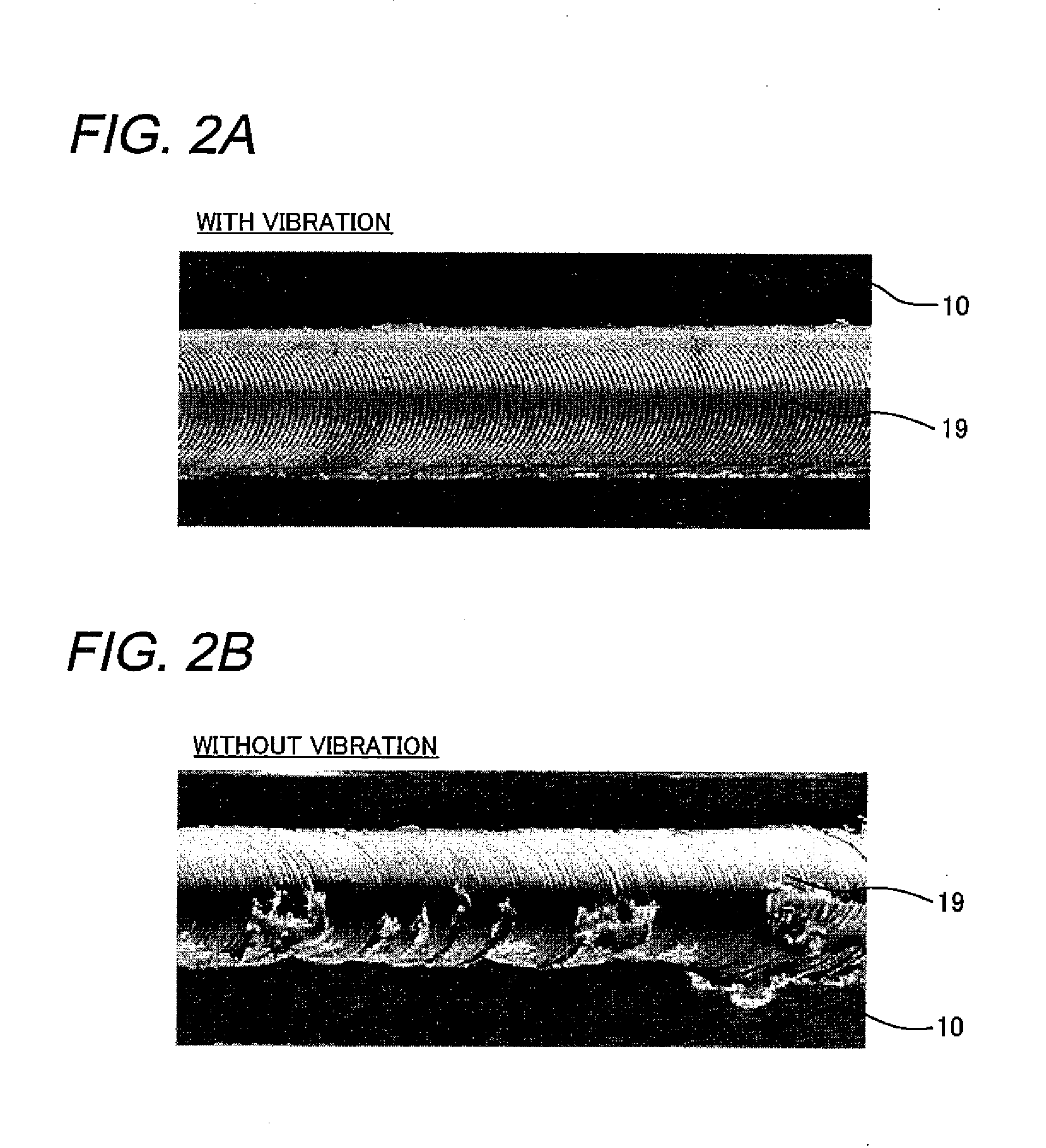Apparatus for friction stir and friction stir processing
a technology of friction stir and apparatus, which is applied in the direction of soldering apparatus, manufacturing tools,auxillary welding devices, etc., can solve the problems of conventional friction stir joining and modification, blowing by, and causing blowing by, so as to suppress the occurrence of surface defects
- Summary
- Abstract
- Description
- Claims
- Application Information
AI Technical Summary
Benefits of technology
Problems solved by technology
Method used
Image
Examples
first embodiment
[0037]FIG. 1 is a sectional view schematically illustrating a structure of an apparatus for a friction stir in a first embodiment of the present invention. An apparatus 100A for the friction stir is so structured that a friction stir processing is carried out so that an arc is drawn along a curved circumferential surface of a columnar or cylindrical work 10. The work 10 is supported on backing rollers 20 and is rotated on a central axis by a motor (not shown) for a rotary table or the like. In the work 10, a ring-like groove G is formed and the apparatus 100A for the friction stir rotates the work 10 and carries out the friction stir processing along the groove G.
[0038]The apparatus 100A for the friction stir includes a tool 13 having a columnar tip-side part (hereafter, referred to as “pin”) 12, a rotating and pressing unit 25 having the function of a rotating unit for rotating a tool 13 on the central axis and the function of a first pressing unit for pressing the pin 12 against t...
second embodiment
[0059]FIG. 3A is a sectional view schematically illustrating a structure of an apparatus 100B for a friction stir in a second embodiment and FIG. 3B is a sectional view taken along line A-A of FIG. 3A. In this apparatus 100B for the friction stir, a hard film 22 is formed on the sliding surface of the retaining jig 15 for suppressing wear caused by friction with the work 10. Examples of the material favorably used for the hard film 22 include diamond-like carbon, titanium nitride, chromium nitride, and the like though not limited to these materials. Any material can be used for the hard film 22 as long as the Vickers hardness Hv of the material is not less than approximately 1000. It is desirable that a coefficient of friction of the hard film 22 should be low and the coefficient of friction of not more than 0.1 is more desirable.
[0060]It is desirable that a pattern of convexes and concaves (not shown), such as dimples or grooves, should be formed on the sliding surface of the retai...
third embodiment
[0064]FIG. 4 is a sectional view schematically illustrating an apparatus 100C for a friction stir in a third embodiment. This apparatus 100C for the friction stir is different from the above-mentioned apparatus 100A for the friction stir in that: a conventionally commonly used tool 13a is used in place of the tool 13 and a straight pipe-like tool insertion hole 16a is formed in the retaining jig 15 for inserting this tool 13a. The conventionally commonly used tool is so structured that a columnar shoulder 21 is provided with a short columnar pin 12a smaller in a diameter than and coaxially with the shoulder 21.
[0065]When the friction stir processing in the above-mentioned first to third processing modes of the first embodiment is carried out using the tool 13a, the following usually takes place when the tool 13a is pulled out of the work 10: the shoulder 21 gets away from the work 10 first and a key hole is produced. For this reason, the apparatus 100C for the friction stir is used ...
PUM
| Property | Measurement | Unit |
|---|---|---|
| frequency | aaaaa | aaaaa |
| diameter | aaaaa | aaaaa |
| diameter | aaaaa | aaaaa |
Abstract
Description
Claims
Application Information
 Login to View More
Login to View More - R&D
- Intellectual Property
- Life Sciences
- Materials
- Tech Scout
- Unparalleled Data Quality
- Higher Quality Content
- 60% Fewer Hallucinations
Browse by: Latest US Patents, China's latest patents, Technical Efficacy Thesaurus, Application Domain, Technology Topic, Popular Technical Reports.
© 2025 PatSnap. All rights reserved.Legal|Privacy policy|Modern Slavery Act Transparency Statement|Sitemap|About US| Contact US: help@patsnap.com



